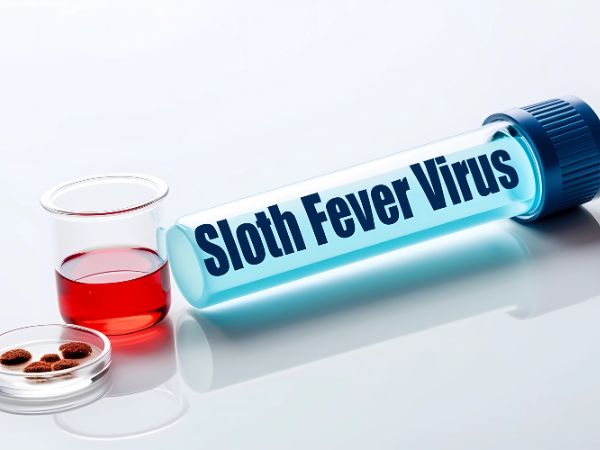Oropouche Virus or Sloth Fever: Understand the Basics

Oropouche Virus or Sloth Fever: Understand the Basics
On the 16th of August 2024, the Centers for Disease Control and Prevention (CDC) issued a health advisory regarding the risk of traveling to areas where the Oropouche virus is active. It is a consequence of the rising cases of Oropouche fever, also called sloth fever, in the US since January 2024. Presently, in the month of August, 21 Oropouche virus or sloth fever cases have surfaced in the country in individuals who had a recent travel history to Cuba, where there is an outbreak.

OROV is responsible for Oropouche virus or sloth fever
At the moment, we need to know what the Oropouche virus or sloth fever is, how it gets transmitted, what the symptoms of Oropouche fever are, and most importantly, how to prevent it. The following sections address these questions based on the recommendations of the CDC.
What is Oropouche Fever?
Oropouche is a viral entity that enters the human body via bugs and causes fever, hence the name Oropouche fever. It is a flu-like condition that usually comes with mild symptoms. The small flies carry the virus and transfer it to the human body upon biting. The disease is also known as sloth fever because its virus was first identified in a three-toed sloth.
History of Oropouche Outbreaks
The Oropouche virus or sloth fever is native to tropical regions the Amazon regions of South America where it has caused an endemic. Before the year 2000, large outbreaks of the Oropouche virus had been reported in Peru, Panama, and Brazil. However, in the past quarter of the decade, the disease has significantly spread to other parts of the world.
Countries like Argentina, Colombia, Ecuador, Haiti, and French Guiana have also seen cases where people or animals have been found to be infected with the virus. In 2024, Cuba also confirmed its first case of Oropouche virus or sloth fever.
How Does the Oropouche Virus or Sloth Fever Spread?
The good news is that the Oropouche virus, abbreviated as OROV, has never been observed to get transferred from one person to another. It is a single-stranded RNA virus that is a member of the genus Orthobunyavirus of the Peribunyaviridae family.
Rather, mosquitoes (Culex quinquefasciatus) and small biting flies called midges or “no-see-ums” (Culicoides paraensis) are responsible for spreading the pathogen into the human body. These midges are usually common in forested areas and are known to affect those who either live nearby or often visit forests.

Oropouche virus or sloth fever takes control of the host’s body once it reaches the bloodstream
Symptoms of Sloth Fever
The symptoms caused by the Oropouche virus or sloth fever are more or less similar to those associated with Zika, dengue, or malaria. These include the following symptoms that appear during the initial illness:
Common Symptoms
- Sudden onset of fever
- Chills
- Severe headaches
- Muscle pain
- Joint ache
- Nausea
- Diarrhea
- Vomiting
- Dizziness
- Eye pain
- Sensitivity to light or photophobia
- Rash
Severe Symptoms
Some of the rare but more serious symptoms which can occur during severe disease include:
- Bleeding
- Meningitis i.e. inflammation of the meninges which are the layers around the brain and spinal cord
- Encephalitis i.e. swelling in the brain or central nervous system
These symptoms of sloth fever often last for less than a week and usually disappear completely between 2 to 7 days. However, they can come back after a while. Overall, the disease takes almost a month to go away completely.
Diagnosis of Oropouche Fever
The first step is to identify if you are experiencing any symptoms of the Oropouche virus or sloth fever. This is particularly risky if you have recently traveled to at least one of the areas where the virus is active. In this case, seek medical help immediately. For the confirmation of Oropouche virus infection, your doctor might suggest taking the following tests:
Serum Analysis
During the initial 4 to 5 days of the infection, the virus multiplies within the patient’s body at a rapid rate. At this stage, it is easy to detect the virus in serum samples. However, after the 5th day, the likelihood becomes lesser and lesser. However, viral RNA is still detectable in the blood sample for several days.
Detection of Antibodies
In response to the Oropouche virus or sloth fever, the patient’s body starts preparing IgM and IgG antibodies. Both of these can be easily detected after at least 7 days from the time the patient was first infected.
Serological Examination
In some patients, the virus can penetrate into the brain and cause inflammation which can lead to mortality. To confirm the presence of the Oropouche virus in the nervous system, serological testing is preferred as the viral RNA is usually not detected in the CSF. For this purpose, urine and saliva samples are taken from the patient and analyzed. Despite being an easy and quick method, this method has not yet been validated in the US.
Plaque Reduction Neutralization Tests (PRNTs)
The plaque reduction neutralization tests or PRNTs utilize serum and CSF samples for the identification of virus-specific neutralizing antibodies.
Apart from these, surveillance tests including molecular tests as well as CLIA-validated neutralizing antibody testing options are also available. The latter can be done on either serum or cerebrospinal fluid (CSF).

Nausea, vomiting, and diarrhea are common symptoms associated with Oropouche virus
Treatment Options
At the moment, there is no treatment option available for the management and alleviation of sloth fever. However, a symptomatic approach can be adopted. The patients are usually prescribed analgesic medications for pain, antipyretic drugs like acetaminophen (Tylenol) for reducing fever, as well as non-steroidal anti-inflammatory drugs (NSAIDs). In addition, drinking fluids is also encouraged with proper rest.
In case of severe symptoms, the doctor might ask you to be hospitalized which is extremely helpful for the observation and management of health issues if the situation worsens.
Am I at the Risk of Getting Oropouche Virus or Sloth Fever?
The risk of getting sloth fever is higher if you are:
- A health official i.e. a doctor and a nurse, etc.
- A laboratory technician handling blood and fluids samples of those affected with the disease
- Closely related to a sloth fever patient
- Presently visiting or have a recent travel history to one of the areas where the Oropouche virus or sloth fever is active
Disease Control and Prevention of Sloth Fever
For disease prevention in the case of Oropouche fever, the following measures have been recommended:
- As the Oropouche virus or sloth fever spreads from small biting flies called midges, preventing their bites can prevent sloth fever. For this purpose, wearing long-sleeved clothes and pants which provide maximum coverage is recommended. Socks should also be worn to cover your feet.
- The use of Environmental Protection Agency (EPA)-registered insect repellent also helps in reducing the risk of Oropouche fever. Make sure that the product has DEET (N, N-dimethyl-meta-toluamide) or any other midges and mosquito repellent ingredient in it.
- It is also advised to stay indoors and employ door and window screens to prevent the entry of flies into the house. Using an air conditioning system is also helpful as the flies usually do not survive cold temperatures.
- The CDC also advises against traveling to areas where infectious diseases, including the Oropouche virus, are active and local transmission is likely. These include parts of South and Central America, as well as the Caribbean.
- In addition, the CDC also recommends changing plans for pregnant travelers. If traveling is necessary, make sure to follow the above-mentioned guidelines as strictly as possible.

Fever is one of the earliest symptoms of Oropouche virus or sloth fever
Frequently Asked Questions
The following section covers some of the frequently asked questions regarding the Oropouche virus:
1. Is Oropouche fever contagious?
No, Oropouche fever is not a contagious condition. Contagious refers to diseases that are transmitted from person to person. In the case of sloth fever, no human-to-human transmission has been observed as it is an insect-borne disease.
2. Is Oropouche virus disease more risky for pregnant women?
Presently, the CDC is actively gaining information on the cases where pregnant women have suffered from sloth fever. In Brazil, some of these patients have been reported where the mothers contracted the Oropouche virus which then got transferred to the fetuses.
Consequently, the fetuses either died or were born with congenital malformations including microcephaly (smaller baby’s head), etc. However, there is a need for further investigation. Furthermore, Oropouche virus or sloth fever in pregnant women also elevates the risk of stillbirths, miscarriages, as well as birth defects.
3. Is sloth fever fatal?
Sloth fever comes with most minor symptoms and some of the major ones. Usually, most patients only experience minor problems and recover within a few weeks. However, if severe symptoms like inflammation of the brain are present, sloth fever can be fatal. Therefore, it is best to seek professional advice immediately if you contract the Oropouche virus.
4. Can I take aspirin for fever in Oropouche disease?
If you have been confirmed by a physician that your fever is a response to the Oropouche virus or sloth fever, then you can take aspirin if the doctor recommends it. Otherwise, it is not advised to take aspirin as your fever might be because of dengue instead of sloth fever. As taking aspirin increases the risk of bleeding in dengue patients, one must not take the drug until the dengue is ruled out.
5. When to see a doctor?
If you are experiencing major symptoms associated with Oropouche virus or sloth fever, make sure to see your healthcare provider at the earliest time possible. The symptoms which should be taken extremely seriously include the following:
- Severe headache
- Severe vomiting
- Pain in the eyes and inability to tolerate light
- Confusion and dizziness
- Stiffness in the neck

Pain in the eyes and sensitivity to light is associated with OROV disease
All different kinds of medical equipment and devices, along with many other medical supplies, can be ordered from Health Supply 770, a reliable name when it comes to medical products. They have a 30-day money-back guarantee and provide your products to you in the shortest possible time.
Bottom Line
In the past few months, cases of sloth fever have been on the rise in the United States as well as in many other countries where the Oropouche virus or sloth fever is active. Most of the cases were reported among travelers returning from Cuba.
The disease is characterized by the presence of fever, rash, body pain, nausea, vomiting, diarrhea, muscle aches, etc. while in some cases, more severe symptoms can also appear which can lead to death. However, this is very rare yet a possible consequence of the disease.
As human-to-human transmission has not been observed at this point, the infection is only contracted either by mosquitoes or insect bites. Despite the fact that the disease is not dangerous and life-threatening in most cases apart from being easy to treat, prevention is still a better and safer option.
Keeping in mind the above-mentioned information, measures should be taken to prevent, or if you have already been infected, to treat the Oropouche virus or sloth fever disease. In this regard, for ordering any kind of medical supplies, reliable vendors like Health Supply 770 should be approached. They ensure the provision of quality products along with satisfactory services.
References
https://emergency.cdc.gov/han/2024/han00515.asp
https://www.cdc.gov/oropouche/about/index.html
https://www.cdc.gov/oropouche/hcp/clinical-overview/index.html



















